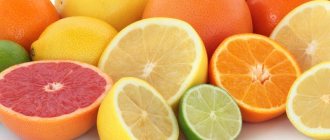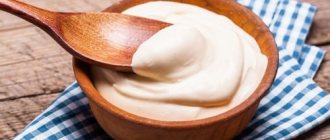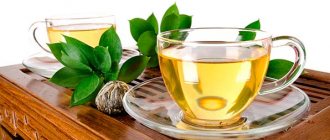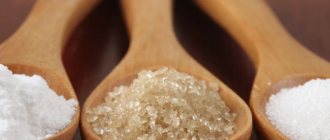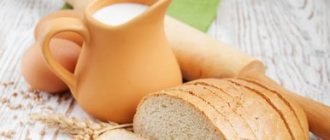When the pancreas is inflamed, they follow a diet, exclude fatty heavy foods from the diet and fill the diet with only healthy foods. There is no need to argue about the benefits of fermented milk products. People suffering from pancreatic damage can include them in their daily diet. Ryazhenka for pancreatitis is suitable for an afternoon snack, or complements breakfast or late dinner. But before you buy a delicious fermented milk product made from baked milk, you should familiarize yourself with the rules of use and adhere to them. Then the drink will become a useful addition to your daily diet and will not cause harm.
Is it possible to drink milk if you have pancreatitis?
Diseases of the gastrointestinal tract require adherence to a diet; in the acute phase it must be strict.
It is recommended to consume fermented milk products from the first days of illness. As for milk, there are some nuances. When talking about milk, in most cases we mean cow's milk. We will talk about it further. In the diet of a healthy person, 25% should be dairy products; for a child, the norm doubles. In this case, you should take into account some of the characteristics of your body.
Milk can cause bloating and fermentation. It is an ideal microflora for the development of pathogens and bacteria. Increases intestinal dysbiosis. But as soon as you boil it and reduce the fat content, the properties change in a positive direction. The thermally processed product lowers the level of hydrochloric acid, thereby eliminating bloating, pain, and facilitating digestion. Thus, you can drink milk with pancreatitis, but only after heat treatment and dilution with boiled water.
As for the remission period, during this period the diet is not so strict. Drinking fresh whole milk is allowed if lactose tolerance is normal. If there is no unpleasant sensation after a meal, you can drink about 1 liter of your favorite drink per day.
There are several types of product, each of which has its own characteristics.
- Pairs. Warm, just milked. Traditional healers recommend drinking this particular product for therapeutic purposes in order to get more benefits. Experts say that fresh milk contains pathogenic microorganisms and bacteria that die within 2 hours. It is recommended to drink the product no earlier than 1.5 hours after receipt.
- Ghee. Subject to heat treatment. The temperature is maintained at 95 degrees Celsius, boiling is not allowed. This product includes all the beneficial properties of whole milk, while at the same time neutralizing bacteria that can cause bloating, belching and other unpleasant symptoms. The taste changes and the color turns yellow.
- Dry. Powder obtained by evaporating liquid. To get the drink, you need to dilute it with a certain amount of chilled or hot boiled water. Theoretically, the product is completely natural and is approved for use by children and adults of any age. However, given the dishonesty of the modern manufacturer, it is better to refuse such a product for pancreatitis.
- Pasteurized. Subject to heat treatment at temperatures not exceeding 75 degrees Celsius. Taste, color, properties do not change, shelf life is extended to 2 weeks. The amount of pathogenic microflora is reduced.
- Sterilized or boiled. Boil for several minutes at 145 degrees Celsius. With this method of processing, bacteria and microorganisms die, but beneficial properties are also lost.
- Condensed. Obtained by evaporating liquid with added sugar. When boiling over low heat, the product will thicken and change its taste. During the period of exacerbation of pancreatitis, condensed milk should be avoided, since the increased sugar content increases the unpleasant symptoms. In case of chronic pancreatitis during remission, it is allowed to consume condensed milk prepared independently at home. The finished store-bought product additionally contains milk powder, preservatives, and ingredients of chemical origin.
Pasteurized baked milk is an ideal product for pancreatitis. And also, boiled, in combination with cereals - buckwheat, oatmeal, rice, semolina.
Dairy products in the acute phase and during exacerbation
With pancreatitis, you can enrich the menu with dairy products only from the third day of an acute attack or exacerbation of the chronic course of the disease. The first ingredient in this category is liquid grated porridge, which was cooked on the basis of milk with a low fat content. At the same time, nutritionists recommend not using homemade milk, since there is a high probability of infection with pathogenic bacteria, which can only aggravate the course of the underlying disease.
From the fifth day, the first fermented milk component is introduced into the diet. For pancreatitis, you can eat cottage cheese with low fat content or completely low-fat. You need to start eating it with fifty grams per day and gradually increase the norm to one hundred grams. In addition, from the sixth day from the onset of symptoms, it is allowed to prepare a steamed protein omelet with the addition of milk.
Useful properties of cottage cheese
With positive dynamics of pancreatic inflammation, which is determined by a gastroenterologist using laboratory tests, the diet is expanded on the tenth day from the moment of exacerbation.
First of all, 1% kefir is introduced - it is recommended to start drinking it with fifty milliliters per day, slowly increase the daily dosage to the volume of one glass.
In addition to kefir, it is allowed to add a small amount of butter to porridge, vegetable or fruit purees, but not more than five grams per day.
Starting from the second week of symptoms, you can drink whey. At first, the norm is a quarter of a glass, but gradually it can reach 250 milliliters per day. It can be taken orally either in its pure form or as one of the components of a cocktail with the addition of freshly squeezed juice.
Such a restriction in the consumption of dairy products is followed for about two months - this is precisely the period necessary to stabilize the body after an acute attack or exacerbation of chronic pancreatitis.
What fruits can you have for pancreatitis?
It is not advisable to consume all sour fruits, especially those with coarse fiber, especially during exacerbations. You can eat fruit only 10 days after the start of remission of pancreatitis. In case of chronic pancreatitis, you should also not abuse various fruits; it is enough to eat 1 of the allowed fruits per day.
- You can eat: strawberries, sweet green apples, papaya, pineapples, avocados, watermelons
- You cannot eat: pears, all types of citrus fruits, sour apples, peaches, plums, cherry plums, mangoes
- During remission, experiments with eating various fruits are allowed, provided they are heat treated - in a double boiler, oven.
There are certain rules when and how to eat fruits with pancreatitis:
- Allowed fruits should be chopped, ground, and crushed as thoroughly as possible.
- Best consumed after baking in the oven or steamer
- You should not eat more than one fruit per day
- You should know exactly the list of permitted and prohibited fruits and know the medications that should be taken if you accidentally eat an unwanted fruit.
Is it possible to eat strawberries and bananas with pancreatitis and why? Most nutritionists believe that the pancreas, without exacerbation of pancreatitis, is able to cope with strawberries in small quantities, but everything is individual. It is better to avoid eating bananas.
The pancreas categorically rejects any alcoholic beverages. Of all the organs of the gastrointestinal tract, this gland is most susceptible to the toxic effects of alcohol. Unlike the liver, it does not have an enzyme capable of breaking down alcohol. It is known that more than 40% of all cases of acute pancreatitis occur after heavy drinking, fatty snacks, or a cheerful long feast.
In chronic pancreatitis, when drinking alcohol, there is a high risk of repeated attacks of acute pancreatitis, which lead to serious functional, anatomical destruction of the pancreas. And as you know, unlike the liver, this gland is not completely restored. And with each intake of alcohol, the formation of foci of fibrosis progresses, which essentially means that the pancreas does not just become inflamed, but rots.
Features of drinking goat milk during illness
The product is not prescribed to people with lactose intolerance and allergies to the composition.
Thus, the results of research by specialists and patient reviews indicate the unambiguous benefits of goat milk for the pancreas. The high nutritional value, unique composition and beneficial properties of the product allow it to take a leading place in the nutrition of infants and in the treatment of gastrointestinal disorders.
source
The benefits of fermented milk products for pancreatitis
Fermented milk products have a number of beneficial properties that have a beneficial effect on the damaged pancreas, gastrointestinal tract and the body as a whole:
- All fermented milk products are rich in protein - the most important structural component necessary for the restoration of pancreatic cells and the production of digestive enzymes. That is why the diet for pancreatitis must be enriched with protein, introducing it 25-40% more than the norm for healthy people. At the same time, complete protein of animal origin with all the essential amino acids from fermented milk products is absorbed much faster and easier than, for example, from meat or milk.
- Fermented milk products serve as a source of calcium, which is also required to restore the digestive function of the pancreas. And compared to calcium from milk, calcium from fermented milk products is more easily absorbed.
- Fermented milk products are prepared using special starters containing cultures of live lactic acid bacteria - lacto- and bifidobacteria, acidophilus, bacillus bulgaricus, etc. Lactic acid bacteria partially break down lactose, thereby making the product easier to digest and absorb compared to whole milk. In addition, cultures of lactic acid bacteria restore normal intestinal microflora (eliminate manifestations of dysbacteriosis), improve intestinal motility and digestive functions, suppress gas formation and putrefactive processes in the intestines. Due to the content of the same lactic acid bacteria, fermented milk products increase the overall resistance of the body and accelerate the processes of recovery and recovery from serious protracted illnesses, which include pancreatitis.
During the period of acute manifestations of the disease, the consumption of a small number of fermented milk products is allowed. These include cottage cheese and kefir. Low-fat pureed cottage cheese is introduced into the menu from the 4-5th day of illness, kefir (daily, fat content up to 1%) - by the end of the first week from an attack of pancreatitis. As you improve (from about 2 weeks from the beginning of the exacerbation), some other fermented milk products are gradually introduced - fermented baked milk, yogurt, yogurt.
During remission of chronic pancreatitis, fermented milk products must be included in the patient’s diet every day. Their range is expanding significantly - sour cream, cheeses, and all kinds of liquid fermented milk products are allowed. They are consumed fresh and used for cooking. But you need to choose products in accordance with certain requirements.
Milk contains more than 100 useful components, including 20 fatty, balanced amino acids, lactose, and minerals. In terms of nutritional value, 1 liter of cow's milk corresponds to 500 g of meat. The same amount of product contains the daily dose of calcium for an adult.
- Globulins, casein, albumin are natural antibiotics. They give the product bactericidal properties, strengthen the immune system, prevent and stop the development of infection.
- A large number of microelements support the functioning of internal systems and organs. This is especially noticeable on hair, teeth, nails, and skin. Thanks to the increased amount of calcium, bones are strengthened, rickets and fractures in children are prevented. Strengthen the functioning of the cardiovascular system, regulate metabolic processes.
- Saturated acids have a beneficial effect on the functioning of the nervous system and have a sedative effect. It is recommended to drink warm to eliminate insomnia, normalize sleep, and calm down after a hard day at work.
- Lactose helps the absorption of calcium, normalizes intestinal function, prevents fermentation and the development of pathogenic microflora.
- The high protein and fat content helps restore strength and increases energy potential. Recommended after physical activity, during the recovery period after a severe or chronic illness.
- The amino acid mizozyme provides healing properties, which is very useful for gastrointestinal diseases with the presence of ulcers, erosions, and inflammation.
- Milk has an enveloping effect. Protects the walls of the stomach from the effects of negative factors, reduces the amount of hydrochloric acid. Eliminates heartburn, bloating, flatulence associated with impaired functioning of the pancreas.
To enhance the beneficial properties of milk in the treatment of pancreatitis, it is recommended to combine it with other ingredients.
Features of goat milk by chemical composition
Table 1. Composition of goat and cow milk
Composition Goat's milk Cow's milk Proteins (g) 4.1 2.9 Fats (g) 4.4 2.5 Carbohydrates (g) 4.4 4.0 Energy value (kcal) 68.0 30–53 Vitamins A, B1, B2, B6, B12, C, D, E, H , PP A, B2, B5, B12, C, H, PP Microelements calcium, magnesium, chlorine, phosphorus, potassium, sodium, iron, copper, manganese sulfur, calcium, magnesium, chlorine, phosphorus, potassium
Table 1 shows that goat milk is superior to cow milk in terms of calories, protein, fat and carbohydrate content. It is also richer in vitamins and microelements. But this only matters for raw milk (when boiling, the amount of vitamins and microelements decreases).
Other benefits of goat milk:
Milk with propolis
This unique beekeeping product has many useful qualities. It has a beneficial effect on the functioning of the pancreas and strengthens the immune system in general.
Beneficial properties of propolis:
- Antimicrobial;
- Antiseptic;
- Anti-inflammatory;
- Antibacterial;
- Healing;
- Calming;
- Pain reliever;
- Choleretic.
Propolis prevents cell destruction, suppresses the inflammatory process, increases the protective properties of the gastrointestinal tract, and normalizes acidity levels.
Medicine recipes
- Add 2 tbsp to 500 ml of milk. Spoons of pure propolis. Boil over low heat for 15 minutes, let cool. Remove the wax film from the surface and filter.
- Add 25 drops of propolis alcohol tincture to 150 ml of warm milk. Drink in one go. To prepare the medicine for children, reduce the dosage to 15 drops.
Therapy should be started from the first days of exacerbation or for prophylaxis in chronic pancreatitis up to 5 times a year. The course should not exceed 7 days; for children it lasts only 3-5 days. Otherwise, propolis helps to reduce the body’s protective functions and stimulates the exacerbation of diseases. It is better to take the medicine before bedtime.
The healing properties of goat milk
The medicinal properties of goat's milk are due to the fact that this product, valuable for the body, contains vitamins A, C, B, D, E and microelements necessary for the normal functioning of the body.
Goat milk has long been used to treat pancreatitis and improve the condition of patients with various types of diseases due to its impressive chemical composition. Thus, vitamin B12 and cobalt contained in it are responsible for the normal state of metabolism and hematopoiesis, which is especially important for the functioning of the pancreas.
Casein contained in goat milk does not provoke allergic reactions even in the most chronic allergy sufferers. In terms of nutritional value, goat's milk, due to the large amount of beta-casein in it, can only be compared with a woman's breast milk. This type of product is very easily digestible due to its high albumin content.
Goat milk contains a high percentage of unsaturated fatty acids, which prevent the accumulation of cholesterol in the blood. Even in ancient times, they said that babies fed with goat's milk would live long lives. Goat milk contains a lot of calcium, phosphorus and potassium.
Proper nutrition - what can you eat if you have pancreatitis?
Everyone knows that the pancreas, during an exacerbation, loves HUNGER, COLD and PEACE. And outside of an exacerbation, it is very important how much, how often, when and what a person suffering from pancreatitis eats.
It is very important to follow certain rules and diet, the most important thing is to eat small amounts of food, quite often, preferably every 3 hours, limit food intake at night and, of course, not eat certain types of foods.
Compliance with these rules is the key to long-term remission and a full life with pancreatitis. What can you eat with pancreatitis without harming this small organ?
- Vegetables: as we said, cucumbers in the form of puree, tomatoes, preferably in the form of juice, broccoli, cauliflower, potatoes, carrots, zucchini, beets, green peas are useful - only baked or boiled. It is very convenient and healthy to make vegetable casseroles or vegetarian soups. White cabbage should be limited and eaten only in boiled or stewed form.
- Fruits: strawberries, sweet apples, pineapples, avocados in the form of compote, jelly, it is especially good to make fruit purees from apricots, and you can eat no more than 1 piece of watermelon or melon.
- Milk: Many people don’t know if milk is ok for pancreatitis? It is not recommended to consume milk in its pure form, since its breakdown requires enzymes, which are not enough for pancreatitis; after 14 years, no one should drink milk in its pure form, except rarely and separately from other products. In diseases of the pancreas, whole milk can cause both diarrhea and flatulence. Among dairy products, kefir, yogurt, and other liquid fermented milk products are considered the most ideal. You can also eat cottage cheese, but up to 9% fat content. It is very convenient and quick to make various casseroles and lazy dumplings from cottage cheese. Sour cream and fatty, sharp hard cheeses are excluded, so only cheeses such as Gouda, Adyghe, mozzarella, and Russian remain.
- Meat: with meat products everything is clear - no fat, therefore, all that remains is lean veal, chicken (without skin), turkey, boiled rabbit meat, you can also make soup with meatballs, soufflé and steam cutlets.
- Eggs: No more than 2 eggs per week and only soft-boiled, it is very difficult for the pancreas to handle the yolk, so it is better to eat only the white.
- Porridge, cereals, pasta: This is the most dietary food. Oatmeal, buckwheat, semolina and rice porridge are healthy. Barley and millet are excluded as cereals that are very difficult to digest. Pasta can also be eaten for pancreatitis, with the addition of a small amount of sunflower or butter.
- Fish: Also, the fish should not be fatty, boiled or baked; you can make steamed cutlets. Pike perch, pollock, cod, and pike are very useful.
- Bread: Brown bread is one of the prohibited foods, so you can eat white bread, preferably dried; cookies can only be biscuits, savory and unsweetened.
- Sugar: Not many people can eat without sweet foods; with pancreatitis, sugar is a strong irritant, but sometimes you can make your own jelly. But you should give up all store-bought sweets; in addition to sugar, they contain such harmful chemicals that it is very difficult for the pancreas to cope with them. It is possible to occasionally treat yourself to marmalade, marshmallows or marshmallows.
- Drinks: Only lightly brewed tea, preferably green, compote, jelly, decoctions of medicinal herbs, rose hips. Mineral water is very useful for this disease, especially Slavyanovskaya and Smirnovskaya.
Medicinal properties
Goat's milk can be used for medicinal purposes for pancreatitis. It has low acidity, so it does not irritate the mucous membranes of the digestive organs. In diluted form, it can be used even for gastritis.
Goat milk has a number of medicinal properties that can be useful for inflammation of the pancreas. These include:
- restoration of impaired metabolic processes;
- removal of heavy salts from the body;
- strengthening the immune system;
- preventing the accumulation of fat in the liver and other organs.
Milk reduces the acidity of gastric juice, thereby reducing the load on the secretory cells of the pancreas. The drink contains lysozyme. This enzyme has antibacterial properties. It relieves inflammation and helps restore normal functioning of the organ.
Goat milk for pancreatitis, cholecystitis
Cow's milk often causes an allergic reaction, which is manifested by skin rashes, itching, and redness. In the presence of individual intolerance to lactose, bloating, rumbling, flatulence, and diarrhea appear. If such symptoms are present, drinking cow's milk is prohibited; it is recommended to replace it with goat's milk.
The product is fattier, but the composition of fats is slightly different. They are broken down and absorbed faster and do not provoke the development of allergies. Goat's milk reduces acidity, however, after neutralizing hydrochloric acid, bloating and belching do not appear. The product is recommended to be used for pancreatitis and cholecystitis on a regular basis to treat exacerbations and prevent their occurrence.
You need to get used to the product gradually. Initially, drink no more than 100 ml, increasing the dose every day. With normal tolerance, you are allowed to drink 1000 ml per day. Whether to take the product during an exacerbation depends on individual characteristics. If unpleasant symptoms appear, it is better to wait until the disease subsides.
Lactose-free milk for pancreatitis
Lactose intolerance or lactase deficiency occurs due to the lack of an insufficient amount of a special enzyme in the body - lactase. The condition is associated with genetic predisposition, age-related changes, diseases of the digestive tract, especially the stomach, intestines, and pancreas. In this case, when lactose enters the digestive tract, bloating, flatulence, increased gas formation, and diarrhea appear.
In case of complete lactase deficiency, it is recommended to give up milk completely and replace it with dairy products - yogurt, kefir, Parmesan cheese, mozzarella, feta, cheddar. With partial deficiency, the product should be used in the remission stage. Experts also recommend drinking lactose-free milk, which does not differ from regular milk in its beneficial composition, properties, and taste. The only difference is that lactose is divided into enzymes that are easily digested.
For pancreatitis, doctors recommend that people from 25 to 35 years old drink 3 glasses of the drink, up to 45 years old - 2, and in old age no more than one. To a greater extent, you need to focus on your own feelings and condition. If milk does not cause discomfort, there is no need to limit yourself.
Fermented milk products for pancreatitis
The consumption of kefir by patients with pancreatitis allows them to compensate for the lack of protein.
In addition, it has a beneficial effect on intestinal function.
Yogurt
Yogurt is especially indicated for pancreatitis. This useful product has not only dietary, but also medicinal properties. It helps strengthen the immune system and contains many vitamins and minerals.
Cottage cheese
Most therapeutic diets include cottage cheese. It is quickly and easily absorbed by the body and has beneficial properties. Thanks to cottage cheese, it is possible to limit inflammation and reduce the likelihood of complications with pancreatitis.
Thanks to cottage cheese, it is possible to limit inflammation and reduce the likelihood of complications with pancreatitis.
Ryazhenka
Ryazhenka quenches thirst and hunger well. Its use during pancreatitis is allowed when the disease passes the acute stage. Eating fermented baked milk has a beneficial effect on the condition of the skin, bones and teeth.
Sour cream, in addition to the protein and calcium usual for dairy products, contains a storehouse of vitamins and valuable substances.
Despite its beneficial properties, sour cream is included in the diet of patients with pancreatitis with great caution. High calorie content and fat content are qualities that prevent it from becoming a product of the diet menu.
The situation is controversial and individual. If symptoms such as nausea, unpleasant taste in the mouth, chest pain, decreased appetite, poor digestion occur, drinking low-fat, heat-treated milk is allowed. If an exacerbation of pancreatitis is accompanied by severe bloating, rumbling, diarrhea, or increased gas production, you need to give up the product for 1-2 days.
However, from the first days of exacerbation, dairy products are not prohibited. Allowed:
- Kefir;
- Homemade yogurt;
- Ryazhenka;
- Baked milk;
- Low-fat cottage cheese;
- Milk porridge.
You should avoid sour cream and heavy cream. These products should be introduced into the diet no earlier than after 3 days. Grinded, crushed milk porridges made from rice, oatmeal, buckwheat, and semolina have a beneficial effect on the body.
Some experts insist on giving up dairy products for 2-3 days during an exacerbation. In this case, you need to focus on your own feelings. If your condition improves after eating dairy products, you can eat them. Cottage cheese with raisins and dried apricots helps restore strength, strengthen the immune system, and stop the development of pathogenic microflora.
First of all, you need to pay attention to the quality of the product and expiration date. It is not allowed to eat expired, spoiled, or with the addition of chemical components. You should buy a natural product on the market from trusted sellers and heat-treat it at home.
- It is forbidden to drink whole milk to avoid lactose intolerance and increased unpleasant symptoms.
- You should not eat fatty cottage cheese, sour cream, or hard cheese, with the exception of some varieties. Such products complicate digestion, worsen the condition, cause heartburn and belching.
- You should not eat condensed milk. Due to the increased sugar content, digestion worsens, fermentation processes intensify, and heartburn appears. Ice cream is in the same position.
- In case of pancreatitis, it should not be consumed during an exacerbation, in a minimal amount after the disappearance of unpleasant symptoms - hard cheese, processed, smoked, braided cheese.
You should not drink full-fat milk during an exacerbation. Dilute in a 1:1 ratio with boiled water.
For pancreatitis, preference should be given to fermented milk products, which, in addition to beneficial microelements, contain live lactic bacteria necessary for the breakdown of lactose. Such products are more easily absorbed by a weakened body and normalize the functioning of the pancreas.
Dietary kefir can be included in the daily menu starting from the 10th day after the exacerbation phase, but no more than a glass per day. You should choose a product with a fat content of up to 2.5%; it is recommended to drink it before bed or season vegetable salads with it during the day.
Yogurt
It is also allowed to consume natural yogurt, which normalizes the functioning of the entire gastrointestinal tract. It is advisable to eat it as a separate dish, without mixing it with anything. It is advisable to choose yogurt without additives and with a fat content of no more than 1%.
It is also allowed to consume natural yogurt, which normalizes the functioning of the entire gastrointestinal tract.
Cottage cheese
After an exacerbation of the disease and a forced period of therapeutic fasting, you can gradually introduce grated cottage cheese into the menu. The protein it contains is easily absorbed by a weakened body. It is necessary to choose a low-fat product; you can steam casseroles from it.
Ryazhenka
During the recovery period, you can replace kefir with fermented baked milk up to 3 times a week; it is softer in taste, but a little fattier. The daily portion of this product should not exceed 100 g.
Sour cream
With the doctor's permission, you can also eat sour cream during the recovery stage, but since it is fatty, it is better to use it only as a dressing for vegetable diet soups or salads, so as not to overload the pancreas.
- Fat content - for liquid products it should be in the range of 1-2.5% (3.2% and 4% - already undesirable, but acceptable in case of stable remission with restoration of pancreatic function). The fat content of sour cream should not exceed 10%, and it is used only in dishes. Cottage cheese is recommended with low fat content (4%), cheeses are also selected low-fat varieties (up to 30%).
- Freshness – fermented milk products must be fresh. And it's not just about the expiration date. To obtain maximum benefits and prevent the accumulation of unnecessary and even harmful by-products of lactic acid bacteria, it is advisable to consume fermented milk products during the first day from production. With longer storage, beneficial bacteria in products die and acidity increases. To do this, it is best to prepare them yourself, using special starters.
- Composition – first of all, the absence of harmful additives. Products must not contain artificial flavors and colors, thickeners, preservatives, etc. In addition, fermented milk products with additives and inclusions that are dangerous for pancreatitis (hot spices, mold on cheeses, etc.) are not allowed.
- Carbonated fermented milk drinks are prohibited.
Patients with pancreatitis should also monitor the serving size of a fermented milk product - for example, sour cream is allowed to consume about 15-25 g per day, cheese - about 50-100 g. Remember that fermented milk products will be useful only if all requirements for their consumption are met .
Sour cream
Features of drinking goat milk during illness
- Serve warm.
- Drink in small sips, holding the liquid in your mouth for better absorption, with a piece of stale bread or cracker as a light dinner.
- Gradually increase your daily consumption, starting with a quarter glass, up to 1 glass per day.
- The first doses should be diluted with water 1:2, then 1:1 subsequently, if well tolerated, drink undiluted.
- It is recommended to add to other dishes (porridge, casseroles, milk soups, jelly, puddings).
- For better absorption, the product is consumed with other fermented milk products - cheese, yogurt. It is not recommended to drink on an empty stomach.
The product is not prescribed to people with lactose intolerance and allergies to the composition.
Thus, the results of research by specialists and patient reviews indicate the unambiguous benefits of goat milk for the pancreas. The high nutritional value, unique composition and beneficial properties of the product allow it to take a leading place in the nutrition of infants and in the treatment of gastrointestinal disorders.
source
Delicious recipes
You can prepare delicious, healthy meals at home without much effort.
Pour into clay pots. Bring to a boil at an oven temperature of 180 degrees Celsius, reduce degrees to 100 degrees. Stand for 1 hour. A dense film forms on the surface. Cover with a lid, reduce the temperature to 70 degrees Celsius, leave for 6 hours. The result is a product that is as close as possible to the recipe for cooking in the oven - brown, with a caramel flavor.
Pour into a container, select the Extinguishing mode. The drink is prepared within 6 hours. Then turn on the heating function for another 1-2 hours.
Ryazhenka
A tasty, healthy product made from baked milk and sour cream. For 3 clay pots you will need 1.5 liters of milk, 6 tbsp. A spoonful of sour cream. Milk is poured into the pots, not all the way to the top. Place in an oven preheated to 200 degrees Celsius until boiling. Reduce temperature to 100 degrees Celsius, leave for 1.5 hours.
